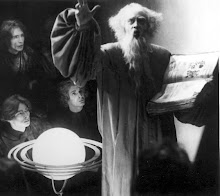Though I do often wonder about conferences like this (I mean, is it only academics who attend?), I’m partial to the subject matter of this discussion.
One of the individuals involved is Chad Post, who you know from Three Percent and Open Letter. Another is my former boss from Words Without Borders.
Chad raises an interesting point about American readers who might have slight interest in “exotic” literature. They tend to consider one name to be a representation of an entire culture’s output. This is certainly the case with Latin American literature, of which I am so very fond. I got in a discussion with someone once about how magic realism is not really the dominant type of Latin American literature. Okay, everyone knows Garcia Marquez and Allende, but they are the two biggest names in Latin American literature translated into English. (By the way, have all you big fans of The House of the Spirits taken a look at Pedro Páramo?) The boom writers represent only one generation of Latin Americans, a generation preceded by Borges, considered by most to be the most important writer to emerge from the Americas. Cortazar could be lumped in there as well. And Vallejo and Neruda and certainly Rubén Darío and José Martí. And What about Bioy-Casares? And then there’s the post-boom generation—Bolaño and Castellanos Moya and Aira and the Crack writers. Where does someone like Guillermo Gomez-Peña fit in? What about Guillermo Cabrera Infante and Reinaldo Arenas? How can anyone look at these writers—all so diverse—and still think that magic realism is the ultimate Latin American literary aesthetic?
Blame publishers. They like to cash in on a trend, and magic realism was a trend. They’re less interested in the dense, political books like Roberto Piglia or the genre-shifting/convention busting work of Manuel Puig. (Still, these writers are translated and published, so maybe it’s a factor of our national taste?)
Anyway, sorry for the digression… read the damn discussion if any of this strikes your fancy. Otherwise, don’t. See if I care.
One of the individuals involved is Chad Post, who you know from Three Percent and Open Letter. Another is my former boss from Words Without Borders.
Chad raises an interesting point about American readers who might have slight interest in “exotic” literature. They tend to consider one name to be a representation of an entire culture’s output. This is certainly the case with Latin American literature, of which I am so very fond. I got in a discussion with someone once about how magic realism is not really the dominant type of Latin American literature. Okay, everyone knows Garcia Marquez and Allende, but they are the two biggest names in Latin American literature translated into English. (By the way, have all you big fans of The House of the Spirits taken a look at Pedro Páramo?) The boom writers represent only one generation of Latin Americans, a generation preceded by Borges, considered by most to be the most important writer to emerge from the Americas. Cortazar could be lumped in there as well. And Vallejo and Neruda and certainly Rubén Darío and José Martí. And What about Bioy-Casares? And then there’s the post-boom generation—Bolaño and Castellanos Moya and Aira and the Crack writers. Where does someone like Guillermo Gomez-Peña fit in? What about Guillermo Cabrera Infante and Reinaldo Arenas? How can anyone look at these writers—all so diverse—and still think that magic realism is the ultimate Latin American literary aesthetic?
Blame publishers. They like to cash in on a trend, and magic realism was a trend. They’re less interested in the dense, political books like Roberto Piglia or the genre-shifting/convention busting work of Manuel Puig. (Still, these writers are translated and published, so maybe it’s a factor of our national taste?)
Anyway, sorry for the digression… read the damn discussion if any of this strikes your fancy. Otherwise, don’t. See if I care.


<< Home